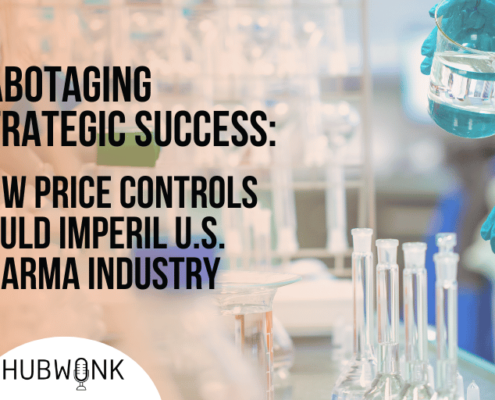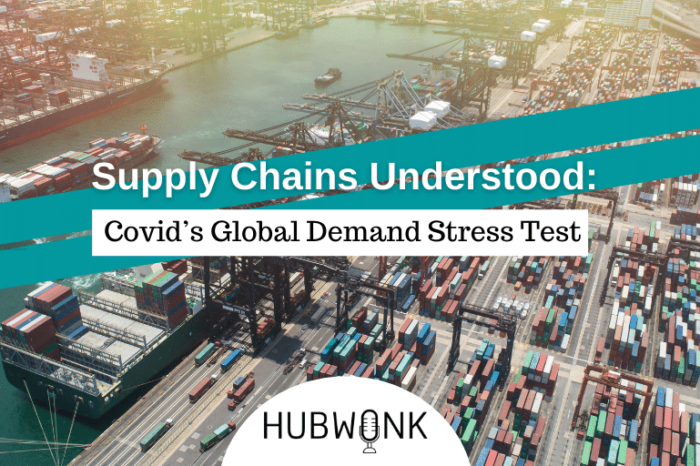Supply Chains Understood: Covid’s Global Demand Stress Test
/in COVID Economy, Economic Opportunity, Featured, Podcast Hubwonk /by Editorial StaffThis week on Hubwonk, Joe Selvaggi talks with global supply chain expert, MIT Professor Yossi Sheffi about the unprecedented global supply and demand shocks created by the Covid-19 pandemic and how effective supply chain managers in an integrated world economy adapted to provide consumers with food, goods, and vaccines in record time.
Watch on YouTube:
Guest:
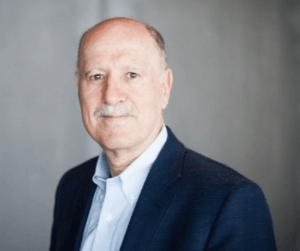 Dr. Yossi Sheffi is the Elisha Gray II professor of Engineering Systems at the Massachusetts Institute of Technology, where he serves as Director of the MIT Center for Transportation and Logistics (CTL). He is an expert in systems optimization, risk analysis and supply chain management, which are the subjects he researches and teaches at MIT, both at the MIT School of Engineering and at the Sloan School of Management.
Dr. Yossi Sheffi is the Elisha Gray II professor of Engineering Systems at the Massachusetts Institute of Technology, where he serves as Director of the MIT Center for Transportation and Logistics (CTL). He is an expert in systems optimization, risk analysis and supply chain management, which are the subjects he researches and teaches at MIT, both at the MIT School of Engineering and at the Sloan School of Management.
Dr. Sheffi was recognized in numerous ways in academic and industry forums and was on the cover of Purchasing Magazine and Transportation and Distribution Magazine. In 1997 he won the Distinguished Service Award given by the Council of Supply Chain Management Professionals. He is a life fellow of Cambridge University’s Clare Hall College and an honorary doctor at Zaragoza University in Spain. In 2006 the Government of Aragon awarded him the Plaza Award for his significant contribution to the economy of Aragon. He won the Eccles Medal from the society of Logistics Engineers in 2009 and in 2011 Syracuse University recognized him with the Salzberg Lifetime Award.
He obtained his B.Sc. from the Technion in Israel in 1975, his S.M. from MIT in 1977, and Ph.D. from MIT in 1978. He now resides in Boston, Massachusetts.
Get new episodes of Hubwonk in your inbox!
Read a Transcript of This Episode:
Please excuse typos.
Joe Selvaggi:
This is Hubwonk
Joe Selvaggi:
Welcome to Hubwonk, a podcast of Pioneer Institute, a think tank in Boston, the onset of the COVID-19 epidemic forced the global economy to shut down in a matter of weeks, despite being locked down and not working themselves, many Americans were surprised to find shortages of essential products in their local stores. This disconnect between the experience of citizen as consumer and citizen, as producer revealed the confidence we share that our global supply chains will endure regardless of the magnitude of the disruption is confidence in our systems. It seems justified now that more than 18 months into the pandemic that spared no country on earth, supplies of goods have largely returned to normal. How did the global economy continue to get products to consumers through a pandemic and who are the experts who will ensure we endure the next global catastrophe? My guest today is Yossi.
Joe Selvaggi:
Sheffi the Elisha Gray Professor of Engineering at systems at MIT, where he serves as director of the MIT center for transportation and logistics. He’s an expert in systems optimization, risk analysis and supply chain management and the author of seven books, including The New Abnormal and A Shot in the Arm: How science, engineering, and supply chains converged to vaccinate the world. Professor Sheffi will share with us his views on how the pandemic created a natural experiment that both tested the resiliency of our supply chains. While also providing a catalyst for scientists, private industry leaders, and government policy makers to coordinate the creation, production and distribution of effective vaccines. When I return, I’ll be joined by MIT professor Yossi Sheffi. Hubwonk is a production of Pioneer Institute, a Boston-based think tank that seeks to improve the quality of life in Massachusetts and beyond is a 5 0 1 C3 organization that relies on your support. Please visit Pioneer institute.org to make a tax deductible donation today.
Joe Selvaggi:
Okay, we’re back. This is Hubwonk, I’m Joe Selvaggi, and I’m now joined by MIT Professor Yossi Sheffi. Welcome to Hubwonk, Professor Sheffi.
Prof. Yossi Sheffi:
Thanks for having me, Joe,
Joe Selvaggi:
I’ve read your most recent two books and I have far too many questions for you for a half hour, but let’s start at the beginning. Let’s for the benefit of our listeners, what is supply chain management? And if you will give us an example of a product or a company for which supply chain management, a good supply chain management is essential.
Prof. Yossi Sheffi:
Well, first of all, there is no product on earth for which supply chain management is not essential. I mean, it’s a, when you, when you go to buy something right now for Christmas and you don’t find it, you realize how essential supply chain is every product. If you think about what is supply chain, what, what it takes to have a product on your shelf. So the product is on the shelf in a toy store. It comes from a warehouse. It come from a manufacturing plant. The manufacturing plant has to make the product. So it has suppliers that supply all kinds of parts that come into the product. But these suppliers also have suppliers in the supply part and the supplier also have suppliers in the end, you come to one of two places and do you come to a mine or to agricultural fields?
Prof. Yossi Sheffi:
When this, when the process start thinking about the whole networks of networks of companies involved in supplying the material, the parts, the the distribution of the finished product, all the in addition to the manufacturer or the transportation companies, the warehouse company, the custom management company, when you have to cross borders, all of this involved in the management of the supply chain, the management of the process to bring you material from the time that it’s just some earth in the mind, or some, you know, iron or to the time that it’s a finished product, being an automobile or a toy or an iPhone, all of this process is supply chain managing, managing this person is what supply chain management is about.
Joe Selvaggi:
I’m reminded when you, when you speak, I don’t know if this is part of your curriculum, but the the epic essay by Leonard Read, “I Pencil,” where he describes just to make a simple pencil evolves, sort of the coordination of millions of people around the world. None of them understand how to make a pencil in its entirety, but all must come together for the most simple object that a first grader needs on his first day of school.
Prof. Yossi Sheffi:
There’s another book travels of a t-shirt that talks about what it takes from the cotton. That’s grown in Texas to be weaved in you know, somewhere in, in Southeast Asia to be died somewhere in in south America to be cut and put together, and then come to a store in the us. It crisscrossed the world several times before it gets to it’s. Right? Lots of people are involved in making any of this.
Joe Selvaggi:
That was an expert in the field. Does, does the science of supply chain management really involve understanding the world as it is and optimizing existing systems, or does it set up to redesign global systems in a way that might be more efficient, more resilient? Is it, is it a design or a, or more of a comprehensive understanding?
Prof. Yossi Sheffi:
Yes. And yes, in order to be afloat is in the engineer as an engineer, you’re always trying to improve something. You’re always trying to build a better mousetrap. You start to build something better, but in order to do it, you have to understand the systems as they are. Because for example, particularly with system like supply chains, they involve not only processes and technology and trucks and warehouse, they involve people. The most element, the most important element of the system are people. So you need to understand how they behave. You need to understand the various cultures around the world. You need to understand the various legal regime around the world. All these require people. And so the combination of people and processes and technology is what makes it so fascinating, so hard to understand and even harder to improve, but it is always a challenge.
Joe Selvaggi:
So when we talk about the challenge, I assume we’re talking about the challenge of disruption, meaning we expect things to arrive on the shelves, and sometimes they don’t. What are some of the biggest challenges to supply chain? What, what, what, when you do your planning, what are some of the, the the things beyond the, the uncertainty of people what can go wrong?
Prof. Yossi Sheffi:
Okay. As I always say, say, when I talk to supply chain management audience, and I always do, and I wrote three books on risk and disruptions and resilience, three of my seven books on this subject then in, this is what gives you job security. Because if everything works the way it’s intended, who needs you, but when you do something that crosses the globe, that goes through multiple borders, that goes through dozens of companies, each one of them has to work. The chain is only as strong as its weakest link, as we know. So everything has to work in order and invariably things go wrong. Sometimes it’s big. Like, of course a pandemic is huge. Sometimes it’s, you know, good size like the, you know, Japanese tsunami and earthquake. Sometimes it makes the headline, but it’s not that big, like a ship get caught in the, you know, the threats come out, right.
Prof. Yossi Sheffi:
You know, it’s, it makes a good video. So that’s why people were so excited about it. But at the end of the day, c’mon, it’s not, nobody’s going to stop because there’s a ship stuck in the Suez canal. There are ways around it. So, but disruptions happen all the time, especially when you optimize the system to be very connected to each other, and, you know, the Toyota manufacturing system and the just in time, which everybody’s talking about it now makes the system actually very connected to each other. And for example, when you have to get into an automotive manufacturing, plant staff have to arise in 15 minutes, interval, not before, not after, before there’d be congested in the yard after the line will have to stop. So it has to be exact in variably. It’s not, I mean, I say life happens, you know, congestion happened, you know, storms happen, hurricanes happen all the time.
Prof. Yossi Sheffi:
So disruptions are continuous phenomena. They happen all the time. Some of them are bigger than others. And for relatively small disruption, it’s easy to deal with and keep a little bit of stock, a little bit of inventory and deal with it for larger disruptions like we have now, there’s actually no specific solutions. We are learning as we are doing. Companies are learning as we are doing because it is global. And there’s no amount of inventory that could a reasonable amount of inventory that would isolate the company from having disruptions like we have today, because it’s not only supply disruption when factories are closed, ports are congested, but it’s huge demand. There’s a total imbalance between demand and supply. So, and for a variety of reasons, we can go into it, but it’s, it’s huge demand and that’s the cracks of a program.
Joe Selvaggi:
So I do want to talk about COVID-19 and it being a, an extraordinary disruption. But when we were talking to the supply chain experts, fellow experts, or, or students, how does one balance the need for resiliency with, with cost and efficiency? In other words, he described ways around disruptions of a, of a ship gets caught in the Suez canal. We can find our sources everywhere, but that comes with a cost. As you say, there’s a cost of holding inventory or having some redundant systems, extra warehouse space. How do we weigh the cost of the need for resiliency with, against the need for efficiency and lower costs.
Prof. Yossi Sheffi:
That’s why I like to talk to supply chain managers rather than the media. The media would look for the silver bullet, the solution. There’s no solution. It’s imbalanced the question of, I mean, how much life insurance are you Jo willing to buy? I mean, it’s a balance how much risk you’re willing to take. I mean, it’s, it’s the same thing with everybody with supply chain. It’s how much are you willing to pay for how much security if you want having enough inventory to protect against what we have now against the shorter dish is something that will drive you out of business. You cannot do it. There’s no warehouse space to hold on this. It’s not gonna, it’s not realistic. The answer is by and large, you have to have some redundancy, but not too much. And they are ways of actually having, let’s say even some inventory more than you think you need and still not have a problem. Let me just explain it a little more, because that’s a very important point.
Prof. Yossi Sheffi:
The problem with inventory is not the cost. The cost of inventory is relatively low. The problem with inventory as was proven is it leads you to low quality product, because what happened is this, let’s say there’s a bit part you discovered only very late after you work a lot of cars on the on the assembly line. For example, instead, if you have low inventory discovered immediately you stop the line and fix the problem. It’s also too easy. If you see a defective part to get another one from the pile, if you have a big pile rather than go ahead and solve the problem, Toyota has proven it, that it is a way to make quality cars and it’s the, the lower costs come as a result of this. It’s not living because you have quality cars. You don’t have, you have less warranty problem.
Prof. Yossi Sheffi:
You have less rework on the line. You have good, eh, even good marketing, good reputation. So you’re, so you sell more. So your costs go down. The cost is a result of this, the cost of go down. So I don’t think you should keep a lot of inventory. You should keep some enough to catch your breath enough to deal with small small disruption. And none of the thing that you have when you have just in time is that you have very strong connection between the company, with its customer and with the supplier. So you can respond quickly, much quicker to problems because the chain has to respond. Not only a company has to respond. So there are a lot of good things that happened with what people call just in time, which is really the Toyota production system beyond just low cost of inventory.
Prof. Yossi Sheffi:
So I companies, so companies should, should keep a balance and you just finished with one example, Toyota itself. After the Japanese disaster realized that semiconductors is a problem because semiconductor, the companies cannot increase production capacity is limited. So they started having Toyota. The originator of the just-in-time started to have inventory of semiconductors. And it actually, when the market went up in the beginning of beginning of this year, January, February, once the vaccine started working, the market went up in Q2 and Q3. Second quarter, third of this year of 2021 Toyota for the first time ever. So more cars in the U S than general models because they have inventory. But guess what? Around the, before the end of Q3, they announced a 40% cut in production. It caught up with them. They’re only so much that even Toyota can keep, but I’m saying they were interesting. They were thinking people, they were not, it’s not a religion that you have to decide, and it’s not the same for every product that some product should keep. Some should not. There’s a lot of consideration that goes, how many other people can make this product? Where are they a lot of consideration that allow you to keep low inventory?
Joe Selvaggi:
So you’ve talked about a terrific supply chain success story Toyota, and, and even they don’t entirely believe in just in time for all elements of their product. Let’s talk about some failures will bring us up to, up to date on COVID-19 some of the earliest failures and sort of take apart where, where supply chain management could have, could have either helped or or with the cause of the problem we talked early on with the toilet paper, or even produce where those just in a sense, in a sense, inevitable victims of shock in demand. What could a supply chain manager manager have done better in those products?
Prof. Yossi Sheffi:
Okay, give you a different answer. Blockchain manager could not have done better. They did unbelievably well let’s talk. Toilet paper was something that started. I talked about it in my book. I actually investigate what happened to toilet paper. It started in Taiwan when people believe that the same material that goes to mask goes to toilet paper, despite what the government said, they started holding toilet paper, the media pick it up, and everybody started holding toilet paper. So there was not enough capacity in the marketplace. But in terms of seeing how supply chain worked in there and think about the food you say produce, think about the food. Amazingly in March, from March last year from one day to the next restaurants were closed. University was closed. Industrial park was closed. All the people that buy embark were closed yet, you didn’t go hungry. I didn’t go hungry.
Prof. Yossi Sheffi:
The media, something said, oh, there’s no eggs. There’s no meat. This is nonsense. Sometimes the cut of meat that you like was not there because some plant was closed for two weeks for a week. Sometimes they don’t. Sometimes some flavor of granola was not available. We’re living in such a era of plenty that people have to, you know, get real. It worked fabulously well with one per one area. They did not work with PPS and you know, some, some medical problems, but this was not a company’s faded. This was a government failure. Bill Clinton read a book on pandemics when he was president and started building a national inventory of PPS and other medical supplies, Bush, one Bush Bush to increase its substantial Obama left it with her to almost nothing. And my guests, I don’t even know if you know the latest, you know, Trump didn’t even know it existed.
Prof. Yossi Sheffi:
So, eh, so we got into the pandemic with very low inventory, almost nothing of PB. This was a government failure because they recognized that nobody can have it. This is a national problem, and didn’t have it. Now, some areas can adjust. For example, in my 2005 book on the resilient enterprise, I wrote about the fact that there are not enough ventilators in the United States for a pandemic. They’re still not enough ventilators to this pandemic, but the defense production act was, you know, was utilized for, for the GM and other common to start making ventilators. And, and the problem was solved relatively quickly all over the world. So it means that for certain critical items, you have to keep some inventory until industry can adjust. It’s not infinite, it’s not yours. You have to keep two, three or four months worth of inventory, central inventory.
Prof. Yossi Sheffi:
And then the other things you may want hospitals to keep some inventory. So that’s an example. Central inventory of medical supplies should be managed like the strategic petroleum reserve, strategic reserve, our place first in, first out, you have to work it. And but you cannot use it unless the president says, okay, but also, if you remember, after the financial meltdown banks have to be tested, they have to have enough money reserves. Guess what? Why don’t we have hospitals that have to keep enough reserves with PP for a few weeks, for a month until the national system can start supplying them so we can do it. And then there are credit groups in the government are thinking about along this land, but it’s not only this, that some other semiconductor, for example, others that are critical to us. In fact, a question of national security that we need to keep inventory or do the beer
Joe Selvaggi:
What you say makes a lot of sense. We stock up on perishables if we know storms coming here in Boston. So we, we know how to weather storms, it’s in our blood here. So I want to pin you down on, on what I hope, but we’ll, we’ll talk some sort of a failure here. There must be something going wrong. We’ve got a a hundred ships, large cargo ships. These are enormous ships. Each of which I think I’ve read that each has 10,000 containers on, and those containers have 20,000
Prof. Yossi Sheffi:
Up to 20,000, 20,000.
Joe Selvaggi:
Each of those has 10,000 kilos of product in it, right? It’s something of that. I, I’m probably getting my numbers wrong. It’s a lot. And there’s a hundred of them where there had been zero off the coast of Los Angeles, lots of products. We can imagine there toys for Christmas or, or whatever we want. Imagine in those trucks, in those containers, but, but we need them and they’re not getting to where they need to go. Explain for our listeners, why is this happening? You know, 19 months into the pandemic.
Prof. Yossi Sheffi:
Okay. And a lot of it has nothing to do with the pandemic. A lot of it has to do with the government. A lot of it has to be a huge increase in demand for products, any product toys, cars, wooden, you know, Ikea furniture, whatever, what happened during the pandemic. A lot of people, you got money. Some people worked from home did, okay. Some people who are not work from home, a lower level of income, got a lot of government help. They could not spend it. They could not go to a movie. They could not go to a gym. They could not go anywhere. So money kept growing in their pocket and the money kept the money kept coming in with all kinds of unemployment. Some of them didn’t have to pay rent. So people were flushed with money. So once the flood gates open at the beginning of this year, second quarter really started flowing.
Prof. Yossi Sheffi:
They started ordering and buy, well, guess what? The capacity of the manufacturing of the port of the trucks of the warehouse of everybody is just not enough on top of it. People because many of them had money or for various other reasons, decided to change their attitude on work-life balance, decided not to work, not to come to work. We have, you know, it’s amazing in the United States, you realize you have almost 40 people of the population is not working, is not engaged in any work. As far as the government knows 40 people for 40% of the United, the thing is 61%. Now the percent of the workforce that’s that’s employed. So we don’t have workers. So not enough truck drivers there, not enough people to, to unload the deports. So the capacity of the port of the, everything, the poor, the transportation is in the warehouse.
Prof. Yossi Sheffi:
Everything goes down in the Southern California. The vacancy rate, the warehouse vacancy rate is less than 2%, which means basically there’s no space. The ports are doing everything that they can, the port of Los Angeles in September. Let me give you the good news and the largest amount of the largest number of process ever since the port started ever the largest, the largest number of containers. It’s still not enough because once it takes the, the the containers out of the ship, you don’t have enough chances. You don’t have enough track. You don’t have enough rail cars. So you have a, you know, bottlenecks rolling bottlenecks along the supply chain. And this is not going to be solved quickly. It’s going to be so, and by the way, I expected no need to support. So it’s very hard to predict, especially in the future, I’ll try to predict the future. So I’d say around me and the second quarter, next year, the shorter dish will disappear. Prices would still be high. Inflation is going in. I believe it will keep going. Prices will still behind, but we’re not gonna show this with one provider. If the government will pull in the trillions of dollars that they’re talking about and get it on the market, it will go up again. So I, so the disease will continue. If we’ll have the, I don’t know how to call it the Bernie Sanders economy or whatever you want to call it.
Joe Selvaggi:
We don’t have, we don’t need to talk politics just, just now, but I just want to make sure I understand what your assertion about the
Prof. Yossi Sheffi:
Yeah, no, no, wait a minute. It’s absolutely not politics. I’m absolutely apolitical. I understand that the United States infrastructure is decrepit. I travel all over the world. I understand that there are people who need help, but what I’m, what I’m praying for is that all this money will be much more directed. We’ll go to places that really need them. We’ll go to households. That’s really cannot work for a variety of reasons and not just spread it out to everybody because that’s the current plan. The carpet is up to people to make $200,000 can still get paid. I mean, it’s ridiculous.
Joe Selvaggi:
Well it’s yeah. When, when there’s a trillions involved, that’s I like to tell my friends it’s 16 zeros. It’s a thousand billion dollars. It’s hard to make that very directed. It seems like a very blunt, large number.
Prof. Yossi Sheffi:
It’s a blunt instrument, but it has unexpected consequences just from supply chain point of view. It has to be very direct.
Joe Selvaggi:
Sure. So I want to make sure I understand it’s, it’s your assertion, our observation that those tankers, oh, those shipping those large container ships are out there because they’re responding to a spike in demand driven by a lot of people, not being able to consume for a long period of time. So, so that without that a spike in demand there’s, there’s nothing wrong with the port. There’s nothing one of the trucks. It’s just
Prof. Yossi Sheffi:
And you’re thinking that there’s a lot wrong with [inaudible].
Joe Selvaggi:
Okay. Well, let’s then now let’s talk about that. What you see as you crumbling infrastructure or that the ports I’ve seen data that says our ports are among the worst in the world. And we, and we’re here in Boston, we’re a port. I want to get to that. Let’s, let’s talk about that. Why why aren’t we more resilient, more flexible. Why can’t we respond more quickly to spikes and set new records every month? What’s holding us back.
Prof. Yossi Sheffi:
Well, I don’t know if you have an opportunity to visit the port of Singapore or Rotterdam or Shanghai, but that totally automated. We are not automated. We use, we are to say that there were legged in terms of technology doesn’t even begin to describe it. I mean, I was struck when was it? About 20 years ago when I wrote my first book I was sitting in the port of Singapore and seeing trucks that are coming into the port and they spent 22nd at the gate within 20 seconds. Then the drivers, I get eyes get scanned, the truck number, the container number, everything gets the trucks. Just go, you go to a port in the United States and there’s a line of trucks as long as the eye can see. So by the way, truckers today in Miami, several dredge companies, the company would go to the, to the port and get them, get the containers out, stop working with the port because they cannot send the wait times.
Prof. Yossi Sheffi:
The wait times are five, six hours. The driver can be on the job. As you know, their hours of service driver can be on the job only for so long. Half of it is taken by waiting in the port. Please drivers get paid by the load. So they are not making money. They cannot not make ends meet. So it’s a problem. One problem is compounding another. And to say that the ports, the, the, we have we have driver shortage before the pandemic. We have, eh, you know, one example. We have some hideaway. The thing that kills me is every, everybody has good intentions. And the screw the system up give you one, one example. The port of Los Angeles does not allow trucks that are more than five years old to come into the port. Why did they do it because of sustainability emissions, the new truck have much better emissions than the old truck.
Prof. Yossi Sheffi:
So only trucks at the five years or immediately when they put this rule, they drove all the small operators out of business. Only big operators can remain, but even the big operators don’t want to invest now in trucks. Why? Because California said by 2030, all the trucks have be electric. Electric, electric, socks are not available right now. Nobody makes electric truck, but they said the rule is there. So companies don’t want to invest right now in any trucks, because they don’t know what they don’t want to get stuck with trucks that they cannot use. I, if I live in Southern California, I would like very much to breathe, clean air. I understand, but the government cannot put a rule like this, and then not realize that they have to pay the truckers, the small truckers to buy a new truck. They have to help them.
Prof. Yossi Sheffi:
They have to help, you know, existing Drucker to invest. Even if, if by 2030, the trucks will be not usable the government or the Southern California government has to take this into account. So if everybody has good intentions, it’s not that anybody’s trying to do something bad, but we work in silos. So we work on environmental problem, not realize that everything is tied to everything in the economy. And I wish we have more classes in since system thinking for all, all parts of government. So people realize that you cannot just do something and have no, and not realize about all the other consequences.
Joe Selvaggi:
I have a, you know, my background is in engineering, but I’m sort of a free market to oriented economists to amateur economist. And there’s a natural conflict there between a top-down design system and a bottom up organic spontaneous order. Do you, do you recognize that in your system analysis, do you say, look I don’t know if you want to call it the muddy path, a theory of, of the world, which is look what people are doing and, and try to codify or, or, or get out of their way rather than try to imagine a perfect order and impose it from above.
Prof. Yossi Sheffi:
Okay. It’s a combo. It’s really a combination because look, they have about the legal system. If we don’t agree with the sanctity of the legal system of laws of contracts, for example, then it’s very hard to run a supply chain. It’s all based on content there’s buyer and seller buy instead of buying and selling and on the supply chain. And they all hope I have to believe that the contract is binding because, you know, a supplier will start based on an order. We start buying material, buying style, believing that they’ll get paid, then they’ll be able, somebody will buy them, they’ll get paid. So, and the law is the ultimate, you know, system from above. So you need some of this, of course you need, you need standards. You know, when you, when you get into your, your zoom and I have to get into one, nice, we can talk to each other.
Prof. Yossi Sheffi:
When I go to everywhere, everyone, the one I can use my laptop because the, you know, wifi works, it’s a standard. So there are things that are standards, actually standards create flexibility, some, eh, the ability to go everywhere and use your phone, your laptop, whatever many examples yet, yet at the same time, the fact that the free market allocate resources the best. So you have, you know, what you want to do, what you want to buy. We had a big experiment with the Soviet union when the government decide how much meat, how much it is, how much this, and nobody had anything, because government plan is very hard to decide. It’s again, it’s not that they were bad, but in this case they were bad. But, but by and large, they’re trying to do the right thing. It’s as impossible, impossible to decide how to allocate resources so that, you know, the current system is actually a very good, the invisible hand is not a bad system in
Joe Selvaggi:
All right. Three tiers for Adam Smith. So let’s, let’s, let’s, let’s move on to over the more positive, but, or not, I won’t say more positive board, but a book that’s filled with awe, your most recent book that you wrote I think it just came out this month, a shot in the arm and talks about really the miracle of what you characterize as the largest product rollout in the history of mankind. You even make comparisons to the moonshot walking on the moon and saying this vaccine is far more impressive than, than that. Describe to our listeners why you’re so much in awe that we now have vaccines. Well,
Prof. Yossi Sheffi:
When it started, we thought that it will take 10 years. It took less than 10 months. In fact, the amazing thing, you know, the model, whatever is right behind my office. It’s right here in Cambridge. Within days after they got the genome from the Chinese, they actually had the vaccine already. They just all day, they need to make sure that it can go into the cell and not disintegrate. The cell will not attack it. So they had to put the sign on all kinds of things around it, and then they all get, get the approval, the FDA approval, the phase one phase two phase three trials. And I know this, but in the end it took 10 months, which is amazing to me. And then the challenge, it’s not only they have to develop something that was not than ever before they had to. Now the challenge is to give it to billions of people, billions and billions and billions of people.
Prof. Yossi Sheffi:
What are the products you can think about needing to get it to billions of people anywhere in the world, because it’s a global problem has to be solved globally. It’s not enough. We vaccinate United States or Europe. We have to vaccinate dorms. So now we’re in the process of trying to vaccinate the world, whether it’s called callbacks or a lot of other organizations try to bring vaccines to countries that cannot afford them, but trying to do it, where in the process of doing, I compare it to the moonshot. And I said, not to minimize the one the moonshot, but they basically had, you know, almost, eh, you know, unfathomable amount of money, money was not an issue. They had the they had one goal. I mean, very well-defined goal. All the people who are going to be there were not, they didn’t have to convince people to go on the on the rocket. People wanted to go, astronauts wanted to go on the rocket. So in many ways it was easy. Here we have to convince a lot of people that they should get it because a lot of figures we should do it, which is difficult again, because humans are involved and we are complex events. So,
Joe Selvaggi:
So, so it seems to me, this is sort of the opposite of a supply chain management task. Rather it’s sort of suddenly the entire world had a demand for a product. And there was no global supply chain of vaccines. Now we’re, I guess, 19 months from discovery of this dreaded virus. We have vaccines, they are being distributed. What are we learning? And is the lesson going to be more that, how do we harness existing systems to distribute vaccines or would you, the wisdom of the last 19 months suggests we’re better off designing a whole new system whereby it, it sits waiting in the wings and for the next inevitable global pandemic.
Prof. Yossi Sheffi:
Okay. So several answers and try to keep it at 12 o’clock and not there. So I pick him, but I don’t believe in designer home. No, it’s not realistic. There’ll be some movement, a government supported movement of you know, some medical supplies and semiconductors government will invest in in reassuring them. But that’s not a fundamental change. There’ll be some, some movement on the periphery. I think the biggest lesson is the fact that the that’s why the subtitle of my book is called the shot in the arm, how science, engineering, and supply chains collaborated to vaccinate the world. Because to me, that’s the big lesson. How in should include government reading, how government, private sector, every, you know, scientists engineering. So chain men all work together basically. And without our money from the government and Trump should get all the credit for the work speed project.
Prof. Yossi Sheffi:
I mean, they threw money at that company. Not every company took it. Pfizer did not take money. So they’ve invested $2 billion of their own. Many other companies did not take money, but someday doesn’t matter. The hopeful message for me is when the world gets together, we can solve amazing problems. We can solve global warming. If we try to, if we stop the nonsense and try to stop thinking about putting plastic straw, getting rid of plastic straw, or getting, you know, doing things on the margin, even electric vehicles are not going to solve the problem, not even close. If you look at the numbers, what we need is technological solution. And the technology we solve the global pandemic with technological solution, with vaccines in our pharmaceutical. And we have, we had the first wave of solution for global warming, which was renewable. But when opens are limited, there’s only so much that we can do it can do it.
Prof. Yossi Sheffi:
We need the process which exists in the lab of carbon capture and sequestration taking the carbon. That’s already in the air and taking it out. Nothing is going to work otherwise because even if the entire population, which by the way, at least 40% of the population United says, don’t believe in global warming because these are the population that don’t want to vaccinate. And they also don’t believe in global warming. So can’t convince them not and try to convince them to pay more for a sustainable product or fly less or drive less. It’s not going to work. People are not willing to reduce their license. Not here, not in Europe, France Paris was burning. When the government tried to put a carbon tax, it’s just not happening. So what we have to have develop the next generation of technology to take carbon out from the air, because two thirds of humanities are living the less than $5 a day.
Prof. Yossi Sheffi:
They want air conditioning and car, and they want to eat meat. And they want concrete houses, all the things that require that emit a lot of CO2 and other greenhouse gases, what are we going to tell them? No, we got it. You guys stay in your tent. It’s immoral. It’s really, we can do it. And by the way, it’s not going to work. It will create huge wave of migration and many other problems. So the solution is the government to come together. And instead of talking about, I don’t know what to call it, self talking nonsense, instead of trying to reduce people standard of living, instead of getting young Swedish teenagers, to talk to them about how bad everything is, invest in technological technologies that can reduce the carbon already in the air. And I, if they, if we could come together and in risk trillion, trillions of dollars, not billions trillions of dollars in helping the economy in helping you know, companies in, in helping EV if we really believe, as Biden says, you believe is, is, is, you know, across your Cortez, whatever, if we really believe that this is existential threat, let’s treat it as an existential threat and let’s find the technology take carbon out of the air.
Prof. Yossi Sheffi:
And then we don’t care that so many people don’t believe in it. We can, we don’t try to convince them. We don’t try to reduce people, you know, standard standard of living anyway. So you ask a short question, I give you a long answer
Joe Selvaggi:
We’re running over. I just, I appreciate that. It’s interesting. I think the thesis or the through line there is we’ve come together to defining this extraordinary vaccine and distribute to the world. We can use the same wisdom and technique to solve global warming. It sounds like a whole new episode of a podcast. I hope you’ll perhaps rejoin me in the future. And talk about the subject of your, obviously your new book, about how to, how to come together to solve global warming. But before we end, I want to make sure our listeners know where they can find you, where they can buy your books. Maybe they can even apply for your graduate program. I understand you were just ranked number one in the world for supply chain management. Congratulations. how can we find you?
Prof. Yossi Sheffi:
Yes, but first of all, not just the fifth year in a row, but
Joe Selvaggi:
Bragging is welcome here. I’m
Prof. Yossi Sheffi:
Absolutely, absolutely. So yes, books are available on Amazon, on Google, on you know, apple all of this on everywhere. You can have the ebook from Amazon. You can get the physical book and the book are available right now, as we speak. Wonderful. Just look under my name, Yossi Sheffi, you’ll find all my books, many translated to dozens of languages, but look for the English version.
Joe Selvaggi:
Wonderful. Yeah. Most of our audience prefers English, English written books. So, well, thank you very much for your time. We’ve went a little bit long. I’m sorry, but I appreciate your, your time with us. And thanks for being on Hubwonk. Thank you very much, Professor Yossi Sheffi.
Prof. Yossi Sheffi:
Thank you very much for having me. I appreciate this opportunity. Thank you. Bye-Bye.
Joe Selvaggi:
This has been another episode of Hhubwonk, a podcast of Pioneer Institute. If you enjoy today’s show there’s several ways to support us. It would be easier for you and better for us. If you subscribe to Hubwonk on iTunes, if you want to make it easier for others to find Hubwonk, it’d be helpful. If you offer a five-star rating or a favorable review, we are always grateful. If you want to share Hubwonk with friends, if you have ideas or comments or suggestions for future episode topics, you’re welcome to reach out to me at hubwonk@pioneerinstitute.org. Please join me next week for a new episode of Hubwonk.
Recent Episodes
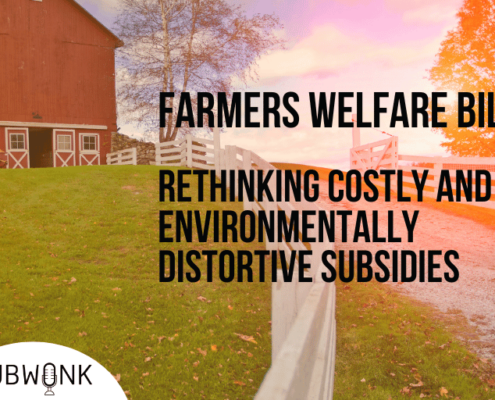
Farmers Welfare Bill: Rethinking Costly and Environmentally Distortive Subsidies
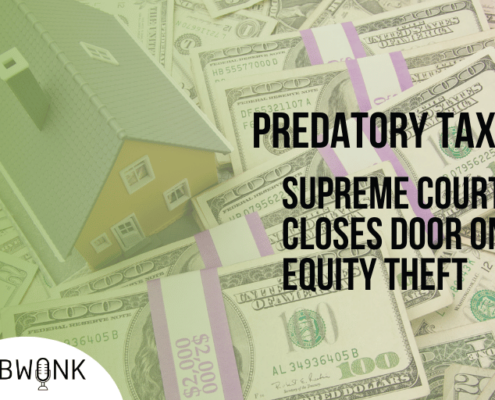
Predatory Tax Ruling: Supreme Court Closes Door on Home Equity Theft

Sweden’s Pandemic Paradigm: Does Trust in Citizenry Save Lives
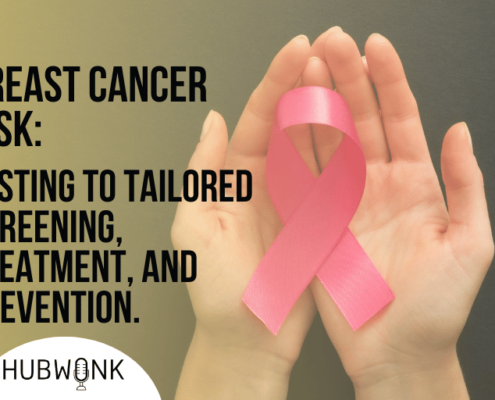
Breast Cancer Risk: Testing to Tailored Screening, Treatment, and Prevention
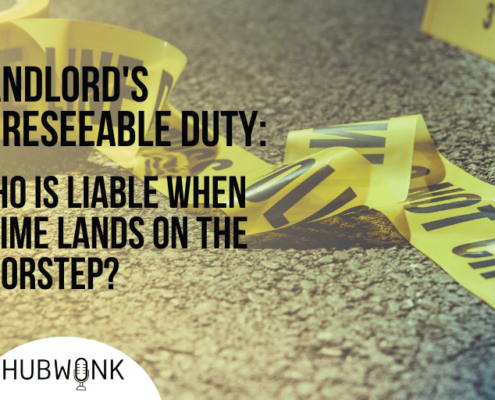
Landlord’s Foreseeable Duty: Who Is Liable When Crime Lands on the Doorstep?
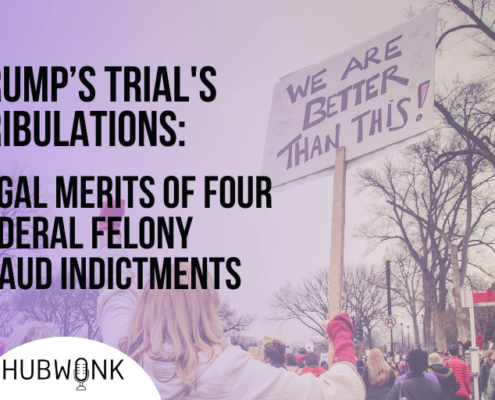
Trump’s Trial’s Tribulations: Legal Merits of Four Federal Felony Fraud Indictments
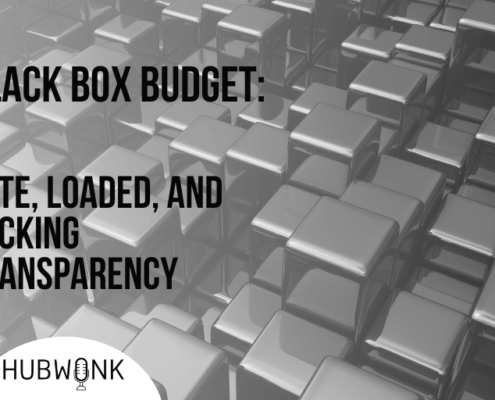
Black Box Budget: Late, Loaded, and Lacking Transparency
